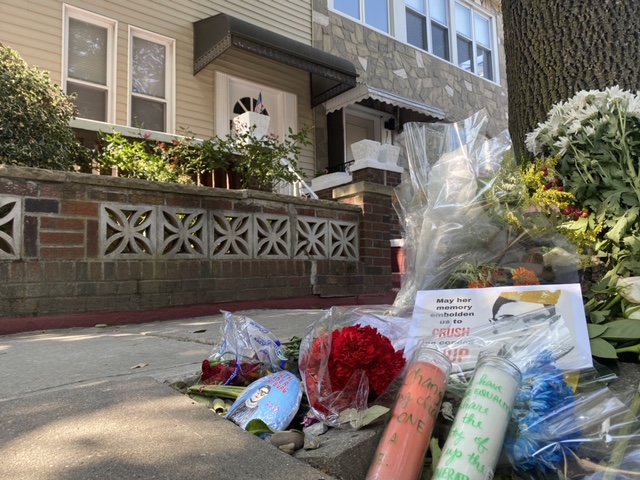
Supreme Court Justice Was a Brooklynite – ‘Born and Bred’
MIDWOOD — Ruth Bader Ginsburg’s roots are deeply entrenched in Brooklyn.
The Supreme Court justice, whose death on Sept. 18 at the age of 87 set off a period of national mourning, was born and raised in the borough and it’s where her brilliant legal mind first showed promise when she was a young girl.
At her confirmation hearing in the U.S. Senate in 1993, Ginsburg proudly made note of her home borough. “I am, as you know from my responses to your questionnaire, a Brooklynite — born and bred,” Ginsburg told the Senate Judiciary Committee.
Ginsburg, who was born in 1933, grew up in a house at 1584 East 9th St. in Midwood. The home has been owned for the past 50 years by William and Diana Brenneisen.
Passersby have placed flowers and cards at the root of the tree on the sidewalk in front of the house since the news broke of Ginsburg’s death.
As a young girl, Ruth Bader attended the East Midwood Jewish Center.
A remarkably mature essay she wrote about World War II for the synagogue’s bulletin at the age of 13 has been posted to the synagogue’s website. It offers a glimpse into the mind of a woman whose command of the language would be so evident years later when she became a justice on the Supreme Court.
“The war has left a bloody trail and many deep wounds not too easily healed. Many people have been left with scars that take a long time to pass away. We must never forget the horrors which our brethren were subjected to in Bergen-Belsen and other Nazi concentration camps. Then, too, we must try hard to understand that for righteous people hate and prejudice are neither good occupations nor fit companions,” the 13-year-old Ruth Bader wrote.
“There can be a happy world and there will be once again when men create a strong bond towards one another, a bond unbreakable by a studied prejudice or a passing circumstance. Then and only then shall we have a world built on the foundation of the Fatherhood of God and whose structure is the Brotherhood of Man,” the essay read.
Ginsburg was a graduate of James Madison High School, Class of 1950. The school has also produced other famous figures, including singer-songwriter Carole King and U.S. Senators Charles Schumer (D-New York) and Bernie Sanders (D-Vermont).
Ginsburg graduated at the top of her class at Columbia Law School in 1959. Thirteen years later, in 1972, she became the first woman full professor at Columbia Law School.
Mayor Bill de Blasio announced on Sept. 22 that the Brooklyn Municipal Building at 210 Joralemon St. will be named after Ginsburg.
“We want to make sure that we honor her in every conceivable way, and especially in the borough that she came from, that gave her so much of her strength and spirit, the borough of Brooklyn,” de Blasio said at his daily press briefing.
“What an extraordinary opportunity to say to the people of Brooklyn, ‘Here’s one of your own who changed the world. Here’s someone of, by and for Brooklyn and this city who did greatest things on the world stage.’ And that building will carry her name forever more,” de Blasio added.
Gov. Andrew Cuomo announced that New York State will honor Ginsburg’s legacy by erecting a statue in Brooklyn. Cuomo said he will appoint a commission to select an artist and search for a location.
“She was a monumental figure of equality, and we can all agree that she deserves a monument in her honor,” Cuomo said in a statement.
While Ginsburg was praised for her work on equality and women’s rights, many of the stands she took during her 27-year Supreme Court tenure were at sharp odds with Catholic Church teachings.
She was a consistent pro-choice voice on the nation’s highest court. The Catholic Church is consistently pro-life.
In her most recent vote in a reproductive rights case, she and Justice Sonia Sotomayor were the two dissenting votes in a case that would permit any company to opt-out of covering contraception for women.
In 2016, the court overturned a Texas law that would have required abortion clinics to be staffed by doctors with admitting privileges at hospitals.
Ginsburg voted with the majority and wrote a concurring opinion in which she was highly critical of the Texas law.
This story has been updated.
[Related: Ruth Bader Ginsburg is Remembered as ‘Jurist of Historic Stature’]
